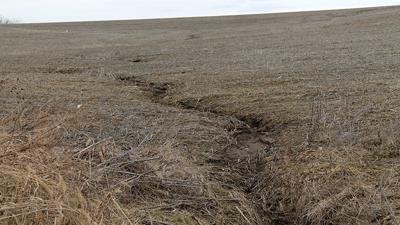
I remember back in the day sitting in my history class learning that many of the great early agricultural and population centers were built around the nutrient-rich flood plains of places like the Tigris-Euphrates River (Fertile Crescent) and the Nile River.
However, flooding events from rivers or snow melt also bring several challenges that need to be addressed in order to prepare fields for planting and to ensure soil nutrient levels are sufficient to optimize crop yield.
During floods, your fields will experience different amounts of erosion, sediment deposition and crop residue accumulation. To avoid compaction of these soils it is crucial to let soils drain and dry out sufficiently before removing any large debris from fields or working the soil.
If crop residues or sediments have accumulated less than 4 inches, then normal field operations can be used to prepare the fields. If larger amounts of debris or sediments have accumulated, then deeper moldboard plowing may be necessary.
Plant-available nutrients
Flooding can significantly alter the level of plant available nutrients in the soil. For example:
- Soil lost due to erosion can take with it valuable plant-available nutrients and organic matter.
- Deposition of sediments from floods may increase the level of nitrogen, phosphorus, silicon and potassium in the soil.
- Water soluble nutrients such as nitrate-nitrogen and potassium can be leached past the crop’s rooting depth and potentially into the groundwater.
- Nitrogen in water-saturated soils can be converted to gaseous forms through the process of denitrification and lost to the atmosphere.
- Available phosphorus can be reduced due to flooding decreasing the populations of microorganisms responsible for promoting phosphorus availability.
Steps to take
Floods bring with them a lot of potential for nutrient additions and losses to agricultural fields, and the only way to know where your field stands is to test the soil.
After the soil surface is dry, the soil should be tested to determine fertilizer requirements to optimize crop yield.
When planting soybean after flooding, the seed should be inoculated to help ensure nodulation and nitrogen fixation as flooding can reduce some of the microbial populations responsible for this process.
Phosphorus deficiencies (slow early growth and purple coloration) may still occur even if soil tests indicate an adequate amount of phosphorus as flooding can decrease the populations of soil microorganisms responsible for increasing phosphorus availability.
If cash crops are not being planted after flooding, consider planting a cover crop to protect the soil from further erosion and to promote the growth of microorganisms that are essential for nutrient cycling.
Source: www.agupdate.com

